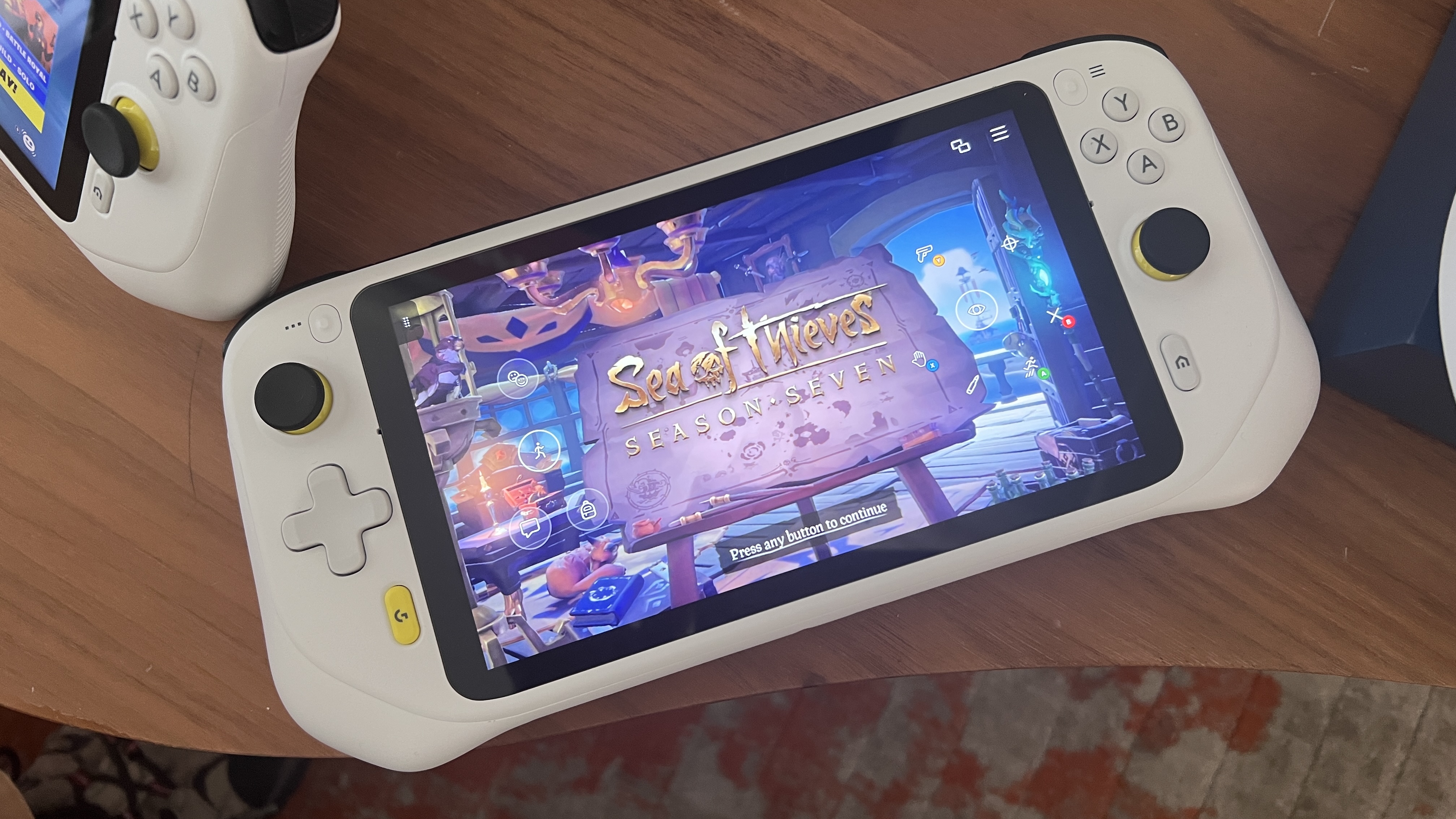Early Verdict
With no 5G, limited game downloads and a high price, the Logitech G Cloud could struggle to find a purpose in a crowded handheld gaming scene.
Pros
- +
Comfortable to hold
- +
Responsive buttons
- +
Seamless cloud gaming
Cons
- -
Limited download capabilities
- -
Costs more than a Switch or a phone controller
- -
Niche functionality
Why you can trust Tom's Guide
The Logitech G Cloud may be the world’s first dedicated cloud gaming system. It’s an intriguing idea, and one that would have been impossible just a few years ago. However, with services such as Xbox Game Pass and Nvidia GeForce Now coming into their own, a handheld system that lets cloud servers take care of the heavy lifting is a completely feasible concept. The Logitech G Cloud seems to deliver well on that concept; the question is whether anyone will actually need it.
I had a chance to go hands-on with the G Cloud at a Logitech press event, and I was perfectly pleased with its performance. On the other hand, I just couldn’t make a strong case for owning one — and I really couldn’t make a strong case for buying one, particularly when the more versatile Nintendo Switch and Valve Steam Deck fill the same niche, in the same price range.
Logitech G Cloud hands-on: Price and release date
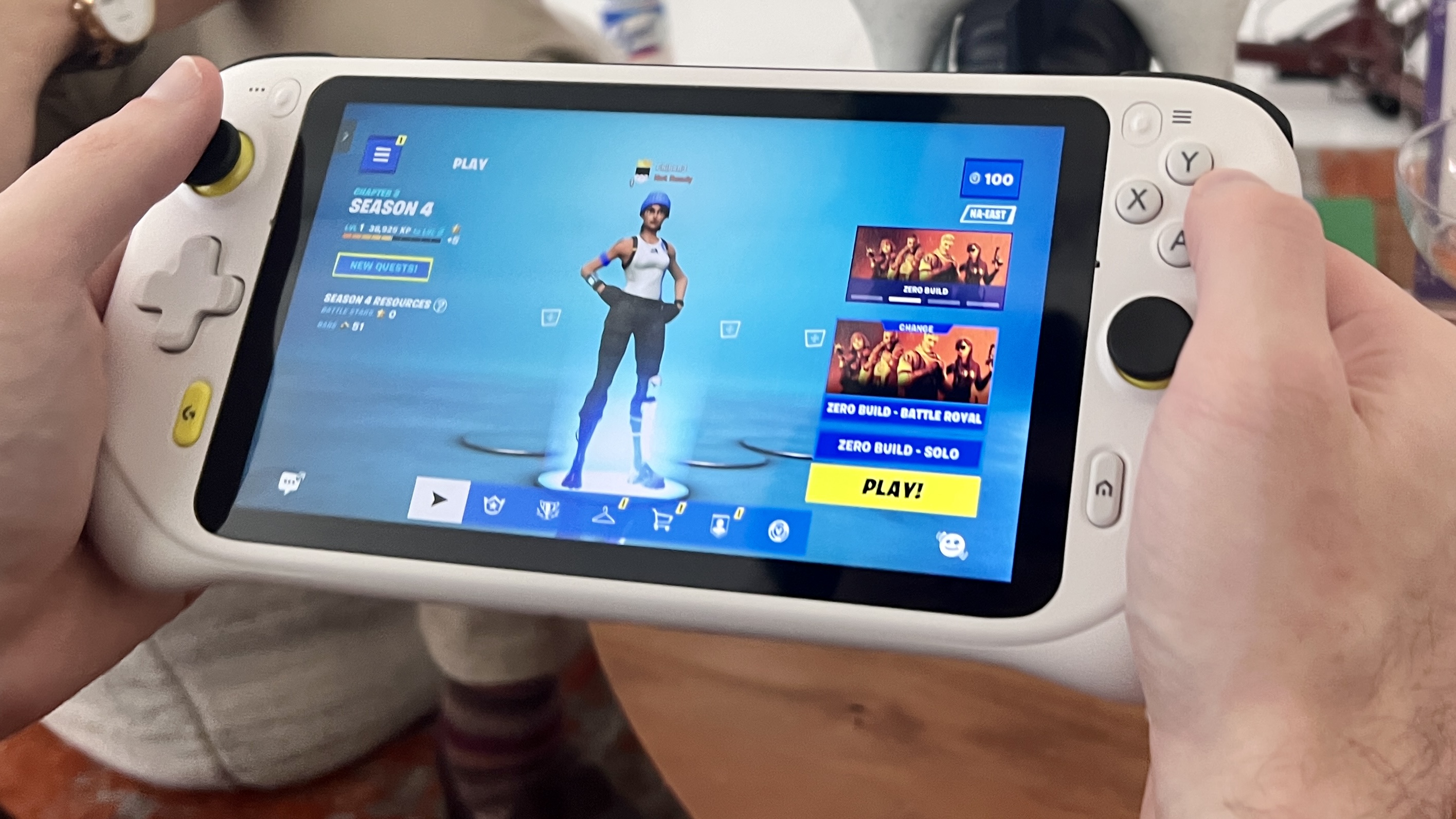
The Logitech G Cloud will start shipping out later this month from Logitech’s official website. If you order it before October 17, it will cost $300; otherwise, it will cost $350. We may see the release of exclusive Logitech promo codes to lower the price of the console in order to promote it on launch, but we won't know for sure until it's finally released.
For the sake of comparison, a base model Nintendo Switch costs $300, while a low-end Steam Deck costs $400. At full price, the G Cloud sits right in-between those two devices, but seems to offer a much more limited feature set.
Logitech G Cloud hands-on: Design
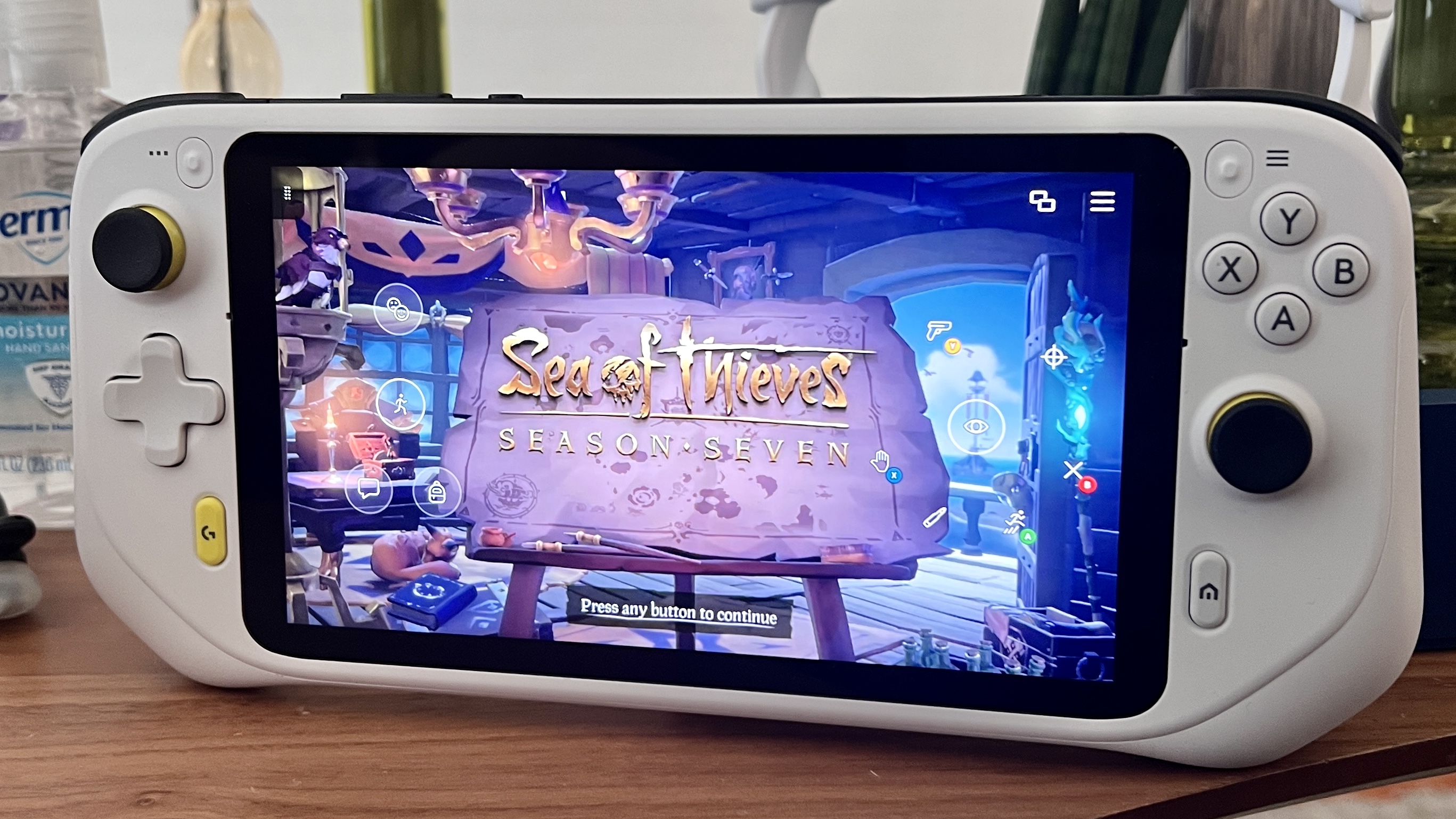
While the Logitech G Cloud serves a slightly different function than the Switch or the Steam Deck, it looks an awful lot like those two systems. A seven-inch, 1080p, 60Hz touchscreen dominates the device, encased within a white plastic chassis. On the left side, you’ll find an analog stick, a D-pad, an options button and a programmable Logitech G button. On the right, you’ll find the face buttons, another options button, the home button and another analog stick (at an offset angle).
On the bottom of the G Cloud, there’s a 3.5mm audio jack and a USB-C charging port. On the top, there’s a power switch and a volume rocker, as well as two sets of bumpers and triggers, just like you’d find on a console controller.
While the G Cloud may not have the most creative design, it’s at least utilitarian, and comfortable to hold. The ergonomic grips on the back helped it fit into my hands easily, and at 16 ounces, it’s easy enough to hold for long periods of time — even though it’s not quite as light as the 14-ounce Switch.
Logitech G Cloud hands-on: Features
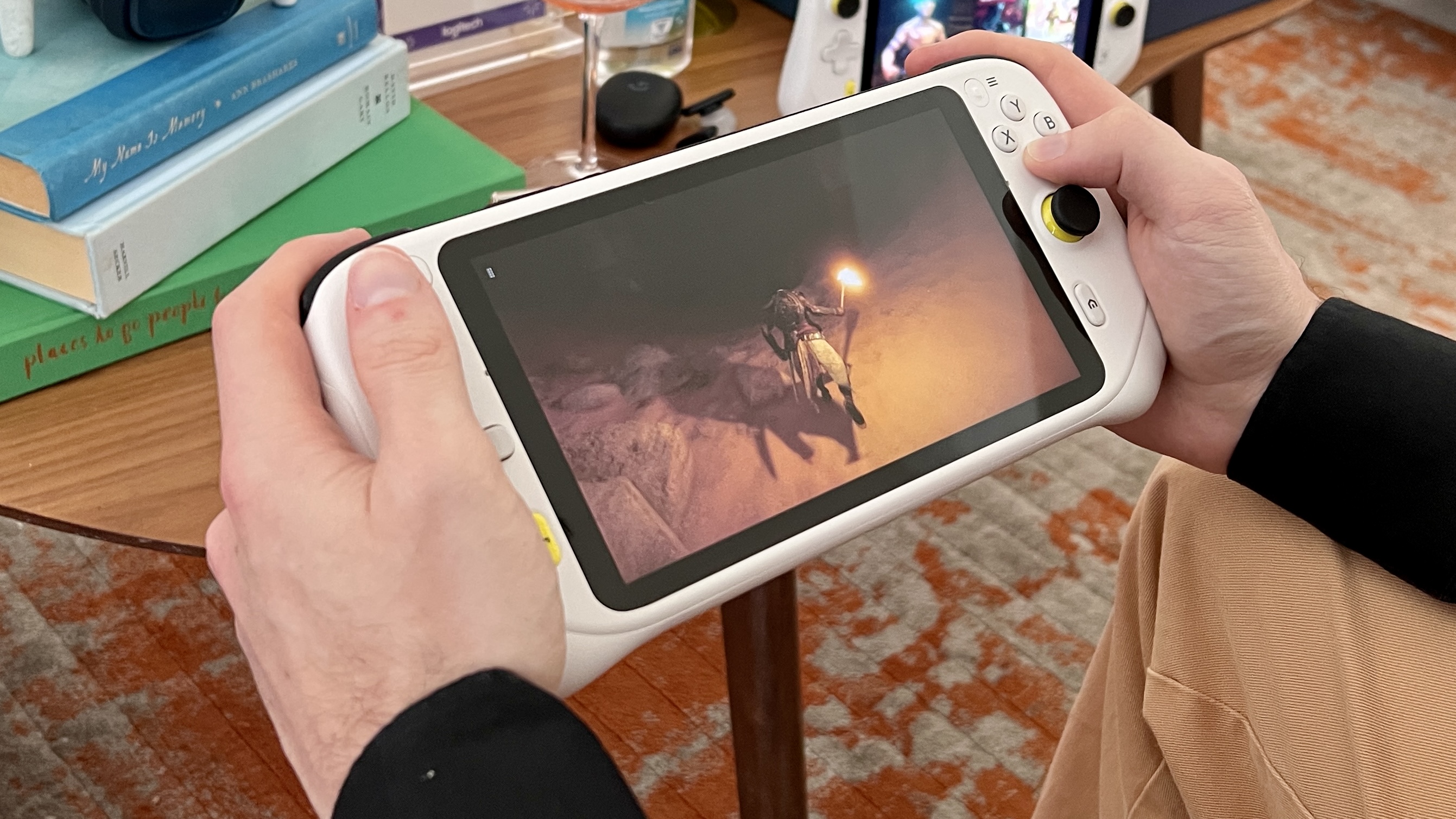
As for how the Logitech G Cloud works, that’s probably the most unusual part of the device. Essentially, the G Cloud is a 7-inch Android tablet with a permanent game controller attached. As such, you can access the Google Play Store and download Android games — although that’s not the primary purpose of the device. Instead, Logitech intends for users to download cloud gaming services, particularly Xbox Game Pass and GeForce Now, and stream their favorite console/PC games.
To test this functionality, I booted up Xbox Game Pass and played through the opening stage of Assassin’s Creed Origins. I was impressed with the G Cloud’s performance, especially considering that we were on a crowded press event Wi-Fi network. I didn’t notice any lag or screen tearing as I guided Bayek through a dark tomb, and I was especially impressed that pulling out my torch didn’t cause any artifacting in the darker sections of the screen.
I also saw a representative play a little bit of Fortnite via GeForce Now, which seemed to perform similarly well. Since the demo took place during a crowded event, I couldn’t spend much time with the G Cloud, but I have to imagine that the device would perform similarly well on any decent Wi-Fi network.
The problem, then, is that the device is limited to Wi-Fi networks. Unlike a smartphone with a controller mount, you can’t take advantage of 5G cloud gaming. Unlike a Switch or a Steam Deck, you can’t download console-quality games to take with you. As such, if you’re commuting or traveling, the G Cloud is essentially just a large screen on which to play Android games — and only offline Android games, at that.
A Logitech representative explained that the G Cloud could be an invaluable tool for parents, who may want to play games in short bursts while their children use the TV. Gamers may also want to take the G Cloud into bed, where they could get a little more game time in before going to sleep. I think these are both reasonable scenarios — but I also don’t think the G Cloud necessarily has the market cornered on either idea. A Switch, Steam Deck or smartphone with a controller mount could accomplish exactly the same thing.
In other words, the G Cloud is a potential solution for playing your favorite games without a TV screen. But it’s not the only solution, and I struggled to think of a situation in which it would be the best solution, especially since it costs about the same as its main competitors.
Logitech G Cloud hands-on: Battery life
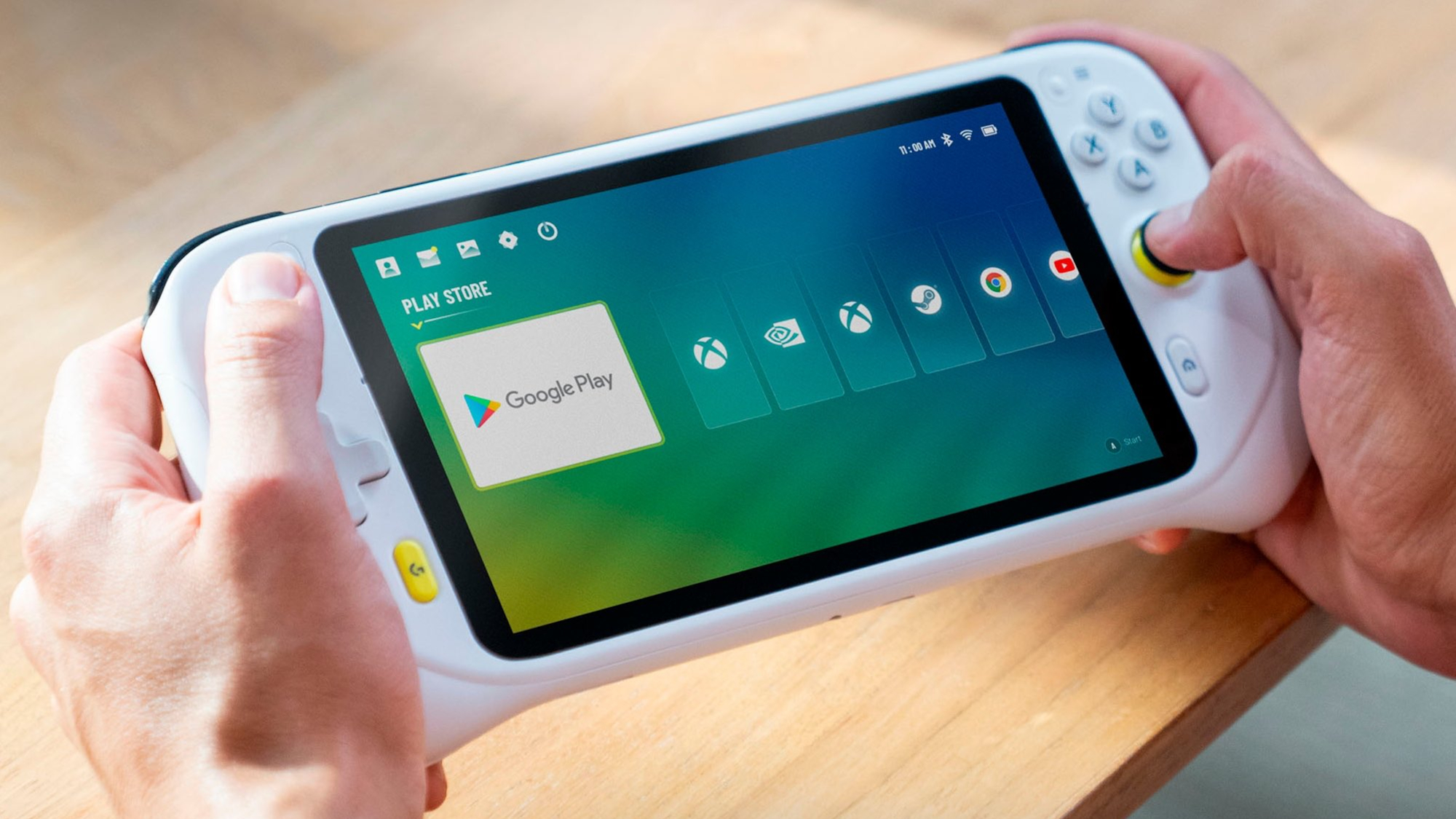
Logitech advertises that the G Cloud could last for more than 12 hours on a single charge, as the heavy lifting for demanding games all happens on a remote server somewhere. Tom’s Guide did not get a chance to evaluate battery life at the press event, however, so we can’t say whether this is an accurate estimate.
Logitech G Cloud hands-on: Outlook
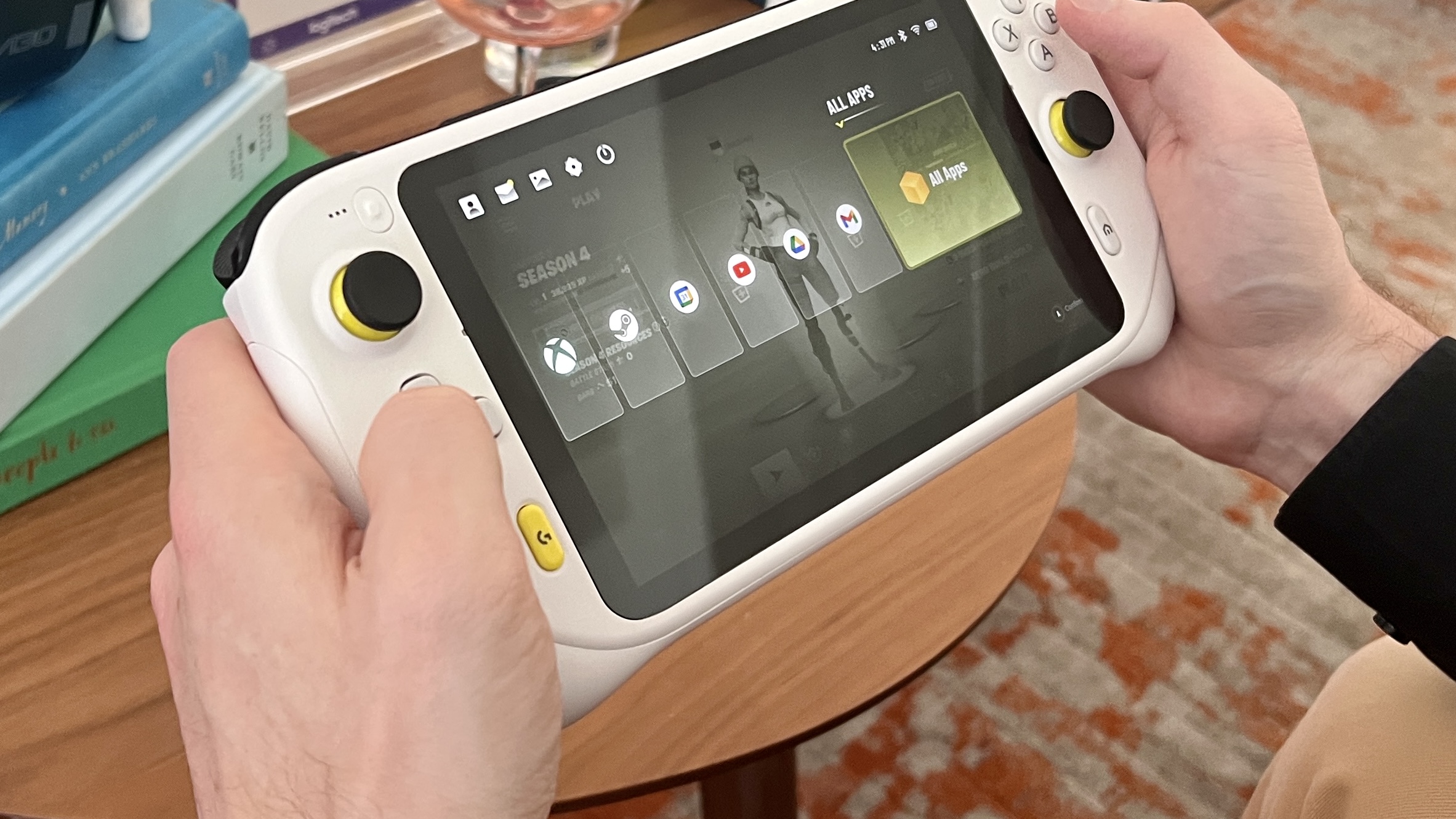
If nothing else, the Logitech G Cloud makes a powerful statement about cloud gaming. In 2022, it’s perfectly feasible to release a game console that, essentially, can’t run any console-quality games. Cloud gaming isn’t quite ready to replace console and PC gaming yet, but it’s almost there, and the fact that the G Cloud exists at all is a testament to that.
Still, while the G Cloud seems to work well, it doesn’t seem to work any better than a Switch, Steam Deck or smartphone, and I wonder whether that will limit its overall appeal. With cloud gaming, you can already stream whatever you want to play to non-gaming PCs, smart TVs, mobile devices and even older game consoles. With all those screens at the ready, how many players need just one more?
Tom's Guide upgrades your life by helping you decide what products to buy, finding the best deals and showing you how to get the most out of them and solving problems as they arise. Tom's Guide is here to help you accomplish your goals, find great products without the hassle, get the best deals, discover things others don’t want you to know and save time when problems arise. Visit the About Tom's Guide page for more information and to find out how we test products.
